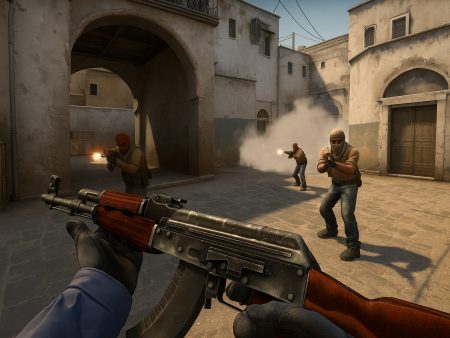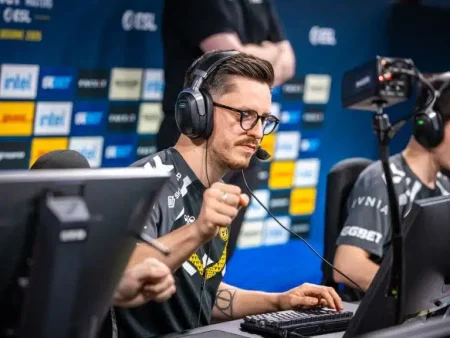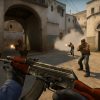Mirage is one of the most iconic and beloved maps in Counter-Strike: Global Offensive and Counter-Strike 2. It’s not just a fan favorite because of its vibrant aesthetics and Middle Eastern vibe; it’s also renowned for its perfect balance, strategic flexibility, and high skill ceiling. Whether you’re new to CS or a seasoned veteran, Mirage is the go-to map for both competitive play and casual matches. But what makes it stand the test of time?
First, Mirage offers equal opportunities for both the Terrorist (T) and Counter-Terrorist (CT) sides. The map layout allows for creative strategies, tight executes, and deep utility usage. Mid control is the centerpiece of the map’s tactical identity, enabling access to both bombsites and creating chances for split plays or quick rotations.
Another reason Mirage is so popular is because it’s extremely accessible. You don’t need to memorize complex callouts or execute pixel-perfect utility to have an impact. At the same time, players who do master the map’s nuances can outplay opponents with smart positioning, grenades, and timing. It’s a playground for individual outplays and team coordination alike.
In pro play, Mirage consistently appears in map pools because of this reliability. From legendary AWP plays in Window to backstabbing lurks through Underpass, Mirage has given us countless memorable moments. That’s why it’s crucial to learn every aspect of the map—from callouts and smokes to advanced angles and economy decisions. Understanding Mirage isn’t optional if you’re serious about leveling up your CS game.
Overview of the Competitive Landscape on Mirage
When it comes to the competitive meta, Mirage holds a unique place. Despite being one of the oldest maps in CS history, it hasn’t changed much over the years—yet it remains highly relevant. In most pro matches, Mirage is either a picked or decider map. Teams like NAVI, G2, and FaZe have mastered Mirage to a level where each player knows exactly when and where to make micro-decisions that shape the round.
This consistency in layout allows for stable practice routines. Teams develop set executes for A and B sites, sharp mid-control tactics, and CT setups with crossfires and one-ways. Every area of the map—from Top Mid to Market—is contested with purpose. Watching pro teams play Mirage is a clinic in discipline, communication, and mechanical skill.
For ranked players, Mirage continues to be the most popular matchmaking map. But don’t be fooled by its popularity—most players barely scratch the surface of what Mirage offers. By studying how pros use every inch of the map, and layering those learnings with your own style, you’ll transform from a casual fragger into a deadly strategist.
Detailed Mirage Callouts (T & CT Side)
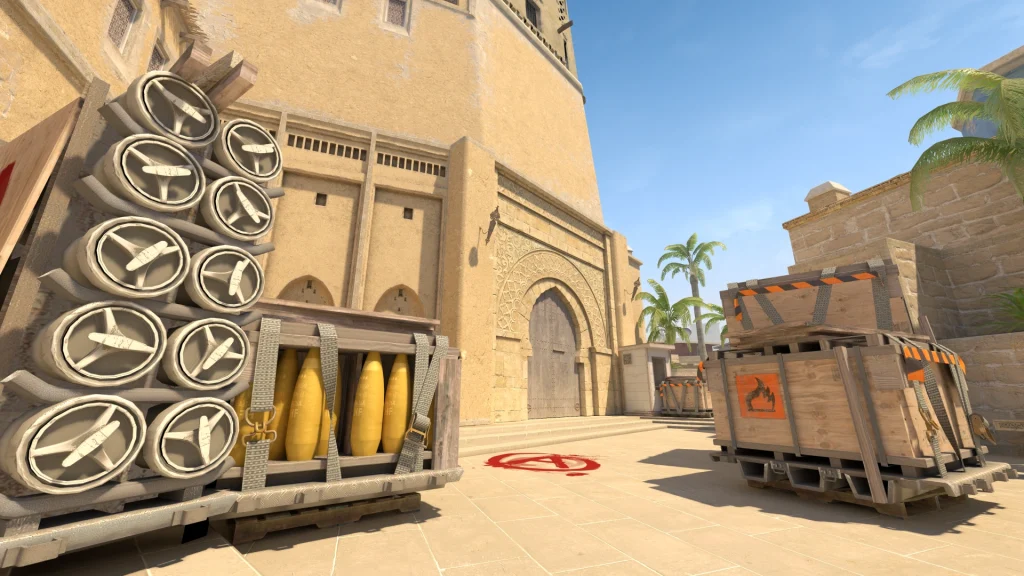
Mid Control Callouts
Mid is arguably the most important area on Mirage. Gaining control of Mid allows the Terrorists to threaten both A and B sites while forcing the CTs to rotate and adjust their positioning. Key callouts here include:
- Top Mid – Starting point for Ts when taking control.
- Bottom Mid – Viewed from CT’s Window or Connector.
- Window – A high-risk, high-reward spot for CT AWPers.
- Connector – Links Mid to A Site; essential for A Splits.
- Catwalk – Connects Mid to B Site; often used by Ts to apply pressure.
- Ladder Room – Gives access to B Short; often contested.
If you’re playing T-side, smokes for Window and Connector are essential. Flashing Catwalk and molotoving Ladder Room can secure safe passage and prevent quick CT flanks. On CT-side, anchoring Mid requires coordination: one player usually watches from Window while another supports from Connector or Short.
The beauty of Mid control lies in its flexibility. Take it early with three players and gain dominance. Or, fake Mid control and execute B through Apartments. Even on eco rounds, a well-timed Mid push can catch the CTs off-guard. Just remember: Mid is not something you “ignore.” If you do, you’re giving away the map.
A Site Callouts

A Site is where some of the most epic clutches and executes happen. It’s wide open, yet full of tricky angles. Here are the primary callouts:
- Palace – High ground entry point above A Site.
- Tetris – Stack of boxes near Ramp, often used for peeking.
- Ramp – Long entrance into A Site from T-side.
- Default Plant – Common bomb plant spot next to triple stack.
- Triple Boxes – Central boxes that provide cover and hiding spots.
- Ninja – Tight corner near CT; perfect for sneaky plays.
- Firebox – Near the corner of the site; common molly spot.
- Ticket Booth – CT-side viewing angle into A.
- Stairs – Leads from Jungle to A; great AWPer spot.
- Jungle – Overlooks Connector and A; vital for rotations.
Ts typically use a three-smoke execute: Stairs, Jungle, and CT. Flashbangs over Ramp and Palace help blind defenders. CTs, on the other hand, need crossfires between Ticket and Stairs, and retake utility is key. Avoid over-rotating unless you have full info, as A can be a trap for greedy defenders.
B Site Callouts
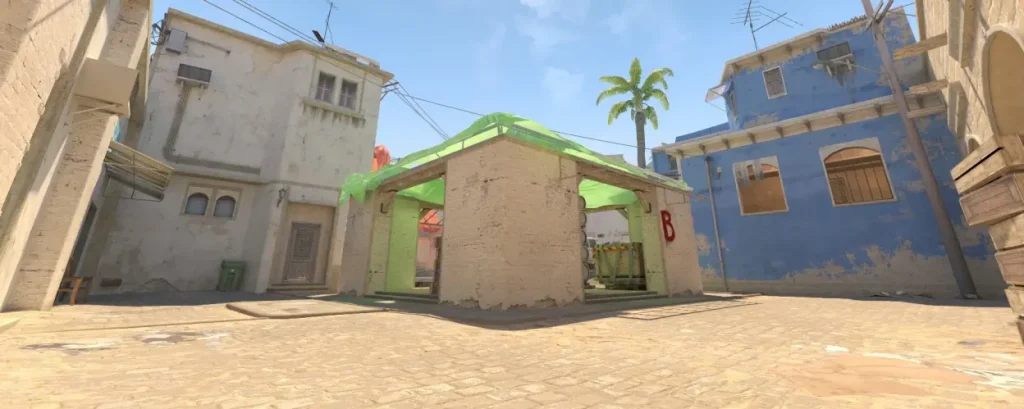
B Site on Mirage is notorious for close-quarter fights and explosive entries. Unlike A Site, which is more open and wide, B Site is tighter, making it both easier to defend and harder to retake. Knowing the callouts can make or break your hold or execute. Here are the essential ones:
- Apartments (or B Apps) – Where Ts begin their approach to B.
- Bench – Back-right of the site; provides decent cover.
- Van – A common spot for CTs to peek and hold Apps.
- Back Site – Refers to the deeper section of B, often played by anchors.
- Pillar (or Default) – Central point for plant and cover.
- Short (Catwalk) – Connects Mid to B, used for fast rotations.
- Market – CT spawn room that connects to B Site.
- Market Window – Used to peek or retake B.
- Kitchen – Near Market; another entry into B.
For Ts, pushing B requires at least one good flash to blind van/jail players and a molotov to clear Bench or Back Site. A smoke on Market Window and Short can isolate the bombsite and allow a safe plant.
For CTs, B is all about timing and positioning. Playing from Van or Pillar with a teammate in Market allows for quick support. If you’re solo anchoring, mix up your spots—sometimes Bench, sometimes Apps jump spot, other times a deep push for intel. Information gathering is crucial.
Don’t forget the “Apps pop” strategy—a well-timed rush with a few flashes and a single smoke can overwhelm even the strongest B setups. Just beware of early molotovs from CTs aimed at Apartments. Sound discipline, utility usage, and spacing matter here more than anywhere.
Connector and Jungle Regions
The area connecting Mid to A—namely Connector and Jungle—is a control point that both sides fight for throughout every match. Whoever controls this space gains immediate access to Mid and A, making it highly strategic.
- Connector – Link between Mid and A Site. Peeked by both CTs and Ts.
- Jungle – A transitional area between Connector and CT spawn.
- Stairs – Overlooks Connector and A Ramp. Key AWP spot.
- Window Room – Offers vision over Mid, and can be rotated into.
For CTs, controlling Connector is often the first priority after spawning. Typically, the Mid player supports with a Window AWP or rifle, while a Connector player jiggle-peeks and anchors A rotations. It’s also common for a player to rotate from B Short into Ladder Room to contest Connector from behind.
For Ts, smoking off Window and Connector opens up Mid control. Following up with flashes and a lurker in Underpass to apply pressure is a textbook Mirage tactic. When done right, it divides the CT defense, forcing them into awkward rotations.
Jungle is also a prime lurk zone. If you’re late-round flanking through Connector, check Jungle corners carefully—this area is a common clutch spot. A well-thrown molotov here can push defenders into awkward peeks or out of hiding.
Ultimately, these transition areas are critical to both site executes and rotations. Losing control of Connector can lead to collapsed Mid defense, while ignoring Jungle can ruin post-plants on A. Treat this area like a chessboard—make strategic moves, not random plays.
Underpass and Catwalk Areas
Underpass and Catwalk (also known as Short) are often overlooked by newer players but are the secret to unlocking Mid dominance on Mirage. They serve as alternative paths that let you outmaneuver or surprise your enemies.
- Underpass – Tunnel under Mid that connects to Mid and B Short.
- Catwalk/Short – Runs from Mid to B Site.
- Ladder Room – A critical junction near Catwalk and Window.
Underpass is excellent for sneaky plays. On T-side, it’s a great flank route to support Mid control or surprise Connector players. Just be wary—CTs often watch for it from Window or Connector. Using a flash before emerging can swing the odds in your favor.
Catwalk is where many engagements happen mid-round. If you’re a rifler or AWP on CT-side, holding Short is essential to stopping Mid-to-B transitions. Playing in or near Ladder Room allows for quick peeks into Underpass or Connector.
For Ts, pushing Cat with a smoke and flash combo can lead to a solid B split or even a fake B into A. The key is timing. If you push too early without Mid control, you’re a sitting duck. Push too late, and CTs may already be rotated or boosted.
One of the most high-IQ plays is boosting a player into Window from Catwalk via Ladder Room. From here, you can surprise Ts going Mid or even flank into A through Jungle. Use these paths like secret hallways in a spy movie—quiet, clever, and deadly.
Map Control Strategies
Early Round Control Tips
Mirage is a game of control, and it starts right from the spawn. How you take—or fail to take—map control in the first 30 seconds can dictate the round’s outcome. Early-round strategies revolve around claiming key areas like Top Mid, Ramp, and Apartments.
For T-side, the default strategy is to spread across the map: one player watches B Apartments, two take control of Mid, one lurks underpass, and another holds A Ramp or Palace. This setup allows you to adapt based on early CT aggression or utility.
Taking Mid early requires precise smokes—Window, Connector, and Top Con are key. Flashes and molotovs help clear Ladder Room and Underpass threats. Once Mid is yours, you can split into A or B, depending on CT positions and rotations.
For CT-side, controlling Mid and key choke points is equally vital. Send one AWP to Window, a rifler to Connector, and another to Short. Use HE nades and molotovs to delay Mid takes. If you sense a fast B or A rush, fall back to play retake with strong post-plant utility.
Aggression also works—an unexpected CT push through Ramp or Apartments can catch Ts off guard. But do it sparingly. Predictable aggression becomes a free kill for the enemy.
The early round is about gathering info and denying your opponent’s game plan. If you can win this phase, you tilt the map in your favor before a single bullet is fired.
Mid-Round Rotations and Map Pressure
Once the initial utility clears and control is established, the round shifts into the mid-phase—arguably the most strategic part of Mirage. This is where rotations, fakes, and mid-pressure come alive.
For Ts, if you’ve secured Mid, now’s the time to execute. A Mid-to-A split via Connector and Ramp with a Palace lurk can overwhelm a single CT. Alternatively, rotating to B via Cat or Underpass allows for a stealthy B hit.
Creating pressure doesn’t always mean committing. A few flashes in B Apps or a dry peek Ramp can pull CT rotations and leave a site vulnerable. Use sound cues and visible presence to bait utility and players out of position.
For CTs, keeping rotations tight is key. Don’t over-rotate to B on one sound cue. Hold crossfires and make sure Jungle, Market, and Ladder Room are always covered. If you lose Mid control, play passive and wait for the site hit—overextending often leads to picks.
The mid-round is where fakes shine. A classic Mirage fake is to smoke and flash A while the real hit goes B via Cat. These require great timing and team communication but can win rounds easily if done right.
Remember: pressure isn’t just about peeking—it’s about making the enemy think you’re everywhere. Create noise, presence, and confusion, then strike where they least expect.
Late Round Positioning and Clutch Spots
When the round clock dips under 30 seconds, everything changes. The late round is all about positioning, awareness, and clutch potential. This is the time where every decision counts—one bad peek, one missed molotov, and the round is lost.
On T-side, you need to be decisive. If you’re setting up for an A take, you better have smokes and flashes ready to isolate Stairs, Jungle, and CT. If you’re going B, make sure someone is watching Short and Market flank. Lurkers play a crucial role here. A Palace or Underpass lurk can turn a 2v3 into a 3v2 instantly with a well-timed kill.
Positioning-wise, prioritize cover and off-angles. Default plant spots are great, but think about where you can plant safely while still being able to defend it. After-plant positions like Firebox, Tetris, and Apartments offer different advantages based on where your teammates are. Don’t overextend—play the clock and force CTs into bad angles.
On CT-side, communication is key in late rounds. If you know the bomb is down A, don’t all retake from CT. Coordinate a push from Jungle, Stairs, and maybe one from Ramp or Palace. If you’re short on utility, trade out kills and use body advantage. Know when to save—don’t throw away rifles in unwinnable 1v3s.
Clutch situations often come down to sound. On Mirage, footsteps from Ramp, Market, or Catwalk are clear indicators. A smart player will walk until it’s time to fight. Use the map’s verticality—players in Palace or Window can hear movement below them. Timing is your best friend in the clutch.
The late round is mental warfare. Outthink your opponent, don’t out-peek them.
CT-Side Mirage Strategies
Default CT Setup
A strong CT-side begins with a reliable default setup. You’re looking to cover all entry points while also keeping Mid pressure. A basic but effective 2-1-2 setup looks like this:
- A Site: One player on Stairs or Jungle, another on Ticket or CT.
- Mid: One player in Window or Connector with potential Ladder Room support.
- B Site: One on Van or Bench, the other floating between Market and Apps.
This setup gives you early info on Mid control while ensuring both sites aren’t overexposed. The player in Window usually has the AWP and focuses on Top Mid. Connector supports the Mid fight while being close enough to help on A splits. If you’re not holding Mid aggressively, you’ll need to retake it with flashes from Jungle or Short.
Communication is key. If the Mid player sees heavy T presence, the A site anchor should adjust for a possible split. If B Apps is quiet for 30 seconds, it might be a setup for a fast push—don’t let your guard down.
This setup should evolve mid-round. If Ts take Mid, fall back and play site crossfires. If Mid is quiet, consider pushing for info with a teammate. Your default is just a starting point—it’s your reactions and adjustments that truly define a good CT side.
Aggressive CT Pushes
Sometimes, the best defense is a strong offense. Aggressive pushes on Mirage can catch even coordinated teams off-guard, especially when they’re running defaults. But you can’t just W-key into Ramp and hope for the best—there’s a method to the madness.
Popular CT aggression points:
- A Ramp Push: Works well early-round with a deep smoke and flash. Pair it with a Palace molotov to trap Ts.
- Mid Peek from Window or Connector: With an AWP or rifle, picking Top Mid can get you an early advantage.
- B Apps Push: Less common, but can be deadly with a flash assist from Market.
For aggression to work, you need utility and timing. Use a smoke to deny early T vision and flash to blind the entry. Combine with a teammate for trade potential. Never push alone unless you have perfect info or are in a 1vX clutch scenario.
Aggression doesn’t just mean pushing—sometimes it’s peeking an unexpected angle or holding an off-timing. Mix it up. Push once in a half, then play passive for three rounds. Keep the Ts guessing.
Also, consider the economy. If it’s an eco or force buy, aggressive plays might help you recover a gun or catch the enemy off guard. Just don’t make it your default style or you’ll get punished by teams who know how to hold pushes.
How to Control Mid as CT
Mid control is arguably more vital to CTs than Ts on Mirage. If you let Ts dominate Mid, you’re going to get split on A and B repeatedly. So, how do you lock it down?
Start with utility. Throw a Window Smoke to deny vision for Ts and pair it with a molotov in Top Mid. From Window, an AWPer can peek or hold angles to challenge anyone peeking Mid boxes. If you don’t have the AWP, use a rifle and play from Connector or boost into Window from Jungle.
Another key position is Short. Playing a rifler here with an HE and molotov allows you to spam boxes or clear Underpass. Pair with a Ladder Room player who watches Cat or Underpass cross. Together, these three players can hold Mid without giving Ts an inch.
Communication again is key. If you lose Mid, call for a retake—flashes from Jungle or CT Stairs can let your Connector player push up. Or, rotate a B player through Cat to reinforce. Losing Mid isn’t the end, but failing to react certainly is.
Finally, don’t be predictable. If you’re Window every round, expect a molly and a prefire. Mix in a boost play or skip Window altogether and stack a site. Mid is dynamic—your setup should be too.
T-Side Mirage Strategies
Default T-Side Map Spread
A solid T-side default is about gathering information, controlling key areas, and forcing out CT utility. On Mirage, that usually means spreading out across the map like this:
- One player holds T Spawn for flanks.
- One pushes Mid with utility.
- One lurks Underpass.
- One peeks Ramp.
- One holds Palace.
This setup allows you to read the CT defense. Is Mid smoked off early? Do they peek Ramp with an AWP? Is someone jump-spotting B Apps every round? These are the clues you use to form your round strategy.
In a default, your goal is simple: pressure the map. Throw a smoke Mid, flash Ramp, make some noise in Palace. Force the CTs to rotate, throw nades, and give away positions. If you get a pick, collapse quickly on the weaker site. If nothing happens, group up and hit together with full utility.
It’s important to communicate during the default. If the player in Mid says there’s no pressure, maybe you go for a Mid-to-B split. If B is clear, maybe a fast Apps hit works. Think of the default as your early-game setup. Don’t rush. Let the round develop.
Executing a Successful A-Split
One of the most reliable T-side strategies on Mirage is the A-split. When done right, it crushes A site with pressure from three directions: Ramp, Palace, and Connector.
Here’s how to pull it off:
- Start by taking Mid control. Use the standard Window and Connector smokes. Flash over Mid and get a player into Connector.
- Palace player times a peek with the Connector entry.
- Ramp player smokes Stairs and CT, then flashes over.
- All three players hit A simultaneously from their positions.
This forces the CTs into extremely difficult spots. If one is stuck on Triple or Default, they’re getting shot from three angles. The CTs in Jungle or Stairs get isolated by smokes, and the retake becomes much harder.
The key is timing. If your Ramp player pushes too early, they get isolated and die. If Connector is late, CTs can refocus. Practice the timing until it’s seamless. Communicate every second—”I’m in Connector now,” “Flashing over Ramp,” etc.
An A-split works even better with fakes. Throw Mid utility to suggest a B play, then pivot into A. Or, let one player lurk through Mid late to catch rotators while the rest hit A. Mirage rewards smart, coordinated aggression—this strat proves it.
Coordinating a Fast B Rush
Sometimes, speed kills—and Mirage’s B Site is perfect for a fast rush when you catch the CTs off guard. But don’t mistake a “rush” for mindless running. A successful B rush requires utility, coordination, and confidence.
Here’s a clean execute:
- One player molotovs Van.
- Two players throw flashes over Apartments.
- One throws a smoke Market Window.
- Everyone bursts out of Apps immediately.
The molly clears Van, the smokes block vision, and the flashes blind any CTs watching from Bench or Back Site. If executed properly, you’ll be planting the bomb before the CTs even realize what’s happening.
Timing is critical. If you hesitate, CTs will rotate and shut you down. Everyone should enter together, clear angles as a team, and communicate who’s watching what. Trade kills and take control of Market immediately.
A fast B rush also works great on eco rounds. Even if you only get a plant and a couple of kills, that’s a win. Just don’t overuse it—once CTs start stacking B early, you’ll need to switch it up.
Lurking and Flanking Effectively
Lurking is a high-risk, high-reward role on Mirage, but when done right, it can change rounds. The lurker’s job is to catch rotations, punish overextending CTs, and keep the defense guessing.
Good lurk spots:
- Underpass – Great for flanking Mid or catching Window players off guard.
- Palace – If the CTs push Ramp, you’re there to punish.
- T Apartments – Slow play here can catch aggressive B players.
A good lurker doesn’t just wait—they listen. Are CTs rotating? Did a smoke land in Window? Was that a reload in Ladder Room? Use sound and timing to your advantage. Also, don’t die early. You’re most useful in the late round, cutting off rotators or backstabbing in post-plant.
One advanced lurk tactic is fake pressure. Throw a smoke Ramp and a flash, then walk back to Mid. The CTs might rotate off A, thinking it’s a hit, giving your team a free plant on B. Mirage is full of mind games, and the lurker is the master manipulator.
Utility Usage Guide
Best Smokes for A Site
A Site smokes are essential for clean executes. Here are the big three:
- CT Smoke – Blocks vision from Ticket Booth.
- Stairs Smoke – Denies AWPers on Stairs.
- Jungle Smoke – Cuts off rotates and support from Mid.
Combine all three, and you’ve created a wall that lets you enter A Site safely. Add a Palace molly and Ramp flashes, and your execute becomes nearly impossible to stop without a god-tier hold.
Pro tip: If you’re alone, even just a Stairs and CT smoke can do wonders. Practice these in offline mode or on a smoke practice map.
Best Smokes for B Site
B Site smokes are more situational, but equally important:
- Market Window Smoke – Keeps AWPers and rotators at bay.
- Short Smoke – Cuts off Catwalk support.
- Bench Smoke – Optional, helps isolate Back Site.
Use these smokes during B hits or post-plant holds. Combine with a Van molly and Kitchen flash to blind CTs pushing through Market. Once the bomb is down, smoke Market Door again if you have utility left.
Effective Flashbangs for Map Control
Flashbangs win fights, period. Here are some essential Mirage flashes:
- Ramp Pop Flash – Bounces off the wall and blinds anyone peeking.
- Top Mid Flash – Helps Ts take Mid early.
- Short Flash from Ladder – Perfect for CTs retaking Catwalk.
- Apps Flash into B Site – Blinds everyone on site instantly.
Practice these flashes until you can throw them instinctively. A well-placed flash can change the round before bullets are even fired.
Molotov Spots to Flush Out CTs
Molotovs are your best friend on Mirage. Use them to clear common spots:
- Firebox – A common hiding spot on A Site.
- Bench on B – Forces CTs into the open.
- Connector – Stops CTs from peeking safely.
- Ladder Room – Clears out aggressive rotators.
Molotovs are also great for delaying pushes or isolating 1v1s. Use them wisely, and you’ll see a huge difference in your clutch potential.
Conclusion
Mirage is more than just a CS map—it’s a strategic battleground where information, timing, and teamwork come together in beautiful chaos. Whether you’re solo queuing or playing with a team, mastering Mirage gives you the tools to outsmart, outgun, and outplay your opponents consistently.
From callouts and positioning to executes and clutches, every inch of this map tells a story—and now you know how to write yours. So load up Mirage, warm up your smokes, and remember: control Mid, time your hits, and never peek Ramp without a flash!
FAQs
What are the best Mirage callouts for beginners?
Start with the basics: Ramp, Palace, Connector, Jungle, Window, Catwalk, B Apps, and Market. These are high-traffic areas and will help you call accurately during matches.
How can I improve my Mirage mid control?
Learn the Window, Connector, and Catwalk smokes. Take Mid with flashes and coordinate with your team. Use Underpass and Ladder Room for multi-angle attacks.
What’s the most effective Mirage execute strategy?
The A-split is a classic and reliable strat. Control Mid, get a player in Connector, smoke CT and Jungle, and hit from Palace and Ramp together.
How do pros play Mirage differently?
Pros play Mirage with tighter coordination, perfect utility usage, and constant adaptation. They also exploit timing and rotations better than most players.
Is Mirage still good for solo queue players?
Absolutely. Its popularity means you’ll find plenty of matches, and solo players can carry with good aim, map knowledge, and utility.
